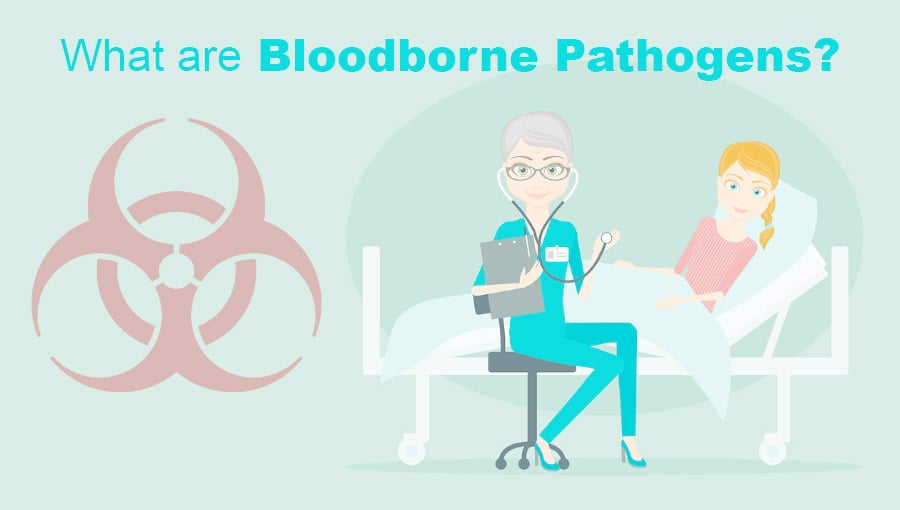What are Bloodborne Pathogens? A Basic Guide
Do you work in an environment that is going to expose you to bloodborne pathogens? If so, you will want to make sure that you understand exactly what bloodborne pathogens are, the dangers that they can post, and the training and control measures that can help to keep you and others safe.
To get a good understanding of what these pathogens are, it is important to become acquainted with the Occupational Safety and Health Administration’s bloodborne pathogens standard and to understand what a bloodborne pathogen is in the first place.
What Is a Bloodborne Pathogen?
Bloodborne pathogens can be spread through the blood, as well as through other bodily fluids. The pathogens have the capability to allow for the transmission of disease to those who are exposed to them if proper precautions have not been taken. There are many different types of diseases that can be transmitted through bloodborne pathogens, and many of them do not have any cure.
Some of the most problematic diseases include HIV/AIDS, hepatitis B and hepatitis C, syphilis, and West Nile Virus. These are extremely dangerous, and if the bodily fluids from these patients are not given the proper respect and care they deserve, they can cause a substantial amount of harm to a lot of people. The OSHA regulations, which are used when coming up with the training courses for certification, help to provide a pathway for working around these pathogens.
OSHA’s 29 Code of Federal Regulations 1910.1030
This code is applicable to anyone who is likely to be in contact with blood and other infectious materials during the course of their job. It refers not only to blood, but to all fluids of the body, including saliva, such as in dental procedures, semen, cerebrospinal fluid, vaginal secretions, synovial fluid, pleural fluid, peritoneal fluid, amniotic fluid, pericardial fluid, and any body fluid that is visibly contaminated with blood and all body fluids in situations where it is difficult or impossible to differentiate between body fluids.

There are dangers with these fluids, which have the potential to cause the spread of illness and disease if not handled properly. Many potential “routes of entry” can occur, including contact from piercing the skin, or contact with the mucous membranes, eyes, or skin. The goal of these OSHA regulations is to make sure that employees are as protected as possible.
What Does the Training Entail?
Training that abides by the OSHA regulations will include a copy of the regulatory text of the standard. Some of the other areas that tend to be covered in the training include an explanation of the epidemiology and symptoms of bloodborne diseases, modes of transmission for the pathogens, how to recognize tasks that might involve being exposed to blood and other potentially infectious materials.
It will also likely include the Three Lines of Defense that are important in OSHA training. This is a practice that is quite common in the safety community.
The first line of defense, which is meant to be the most effective, includes engineering controls. Essentially, this line of defense is to find ways to eliminate the hazard or to isolate the workers from the hazard via engineered controls. This is not always possible with certain types of work that could involve hazardous bloodborne pathogens, of course.
The second line of defense is administrative and work practice controls. This means that the training should change the way that people work through admin and work practice efforts. Finally, there is the third line of defense, which is personal protective equipment. This could include gloves, masks, eye protection, gowns, and other types of protective gear and clothing.
The overall goal of the training is always to provide employees with the information and education they need to be as safe as possible whenever they are dealing with bloodborne pathogens in the line of work.
Who Might Need This Type of Training?
When it comes to the employees, there are many different fields that may need to have this type of training in addition to doctors, nurses, and other healthcare professionals. Consider those who are working in the laundry of a clinic or hospital, as they will also be exposed to the bloodborne pathogens and will need to know how to contend with them. The same is true of custodians who work in those areas. Tattoo artists, permanent makeup artists, and anyone who is likely to be exposed to the pathogens in their work environment will want to have training.
Getting Proper Training and Certification for Dealing With Bloodborne Pathogens
Today, there are many ways to get the certification and the training that is needed for bloodborne pathogens. Some of those options are naturally better than other choices. For example, this type of training can be quite effective when taught online through courses where the students can go at their own pace to learn. Online courses for bloodborne pathogen training can be a faster and cost-effective way of getting the training that is needed whether it is for an individual or for a company that needs to have all of their employees certified. You can learn how online training workers here by clicking this link.
One of the important things to remember when it comes to bloodborne pathogens is that the certification that is received upon completing the course is not permanent. Those who are working in these fields will need to have annual training. This is to ensure that they have the refresher they need to ensure proper safety, and that they are informed of any changes that might have been added to the regulations over the course of the last year.
Those who are in need of training will want to make sure that they find a quality company for bloodborne pathogen training. They should check to see that the company they are choosing has training that is compliant with OSHA’s standard. Check out the company’s reputation and the type of training that they offer to be sure you are working with only the very best.
With BloodborneTraining.com you can Sign Up for free and take the Bloodborne Pathogens course right away at no cost. Once you completed the course, you’ll have the option to purchase your certificate. You can Sign Up by clicking this link.





